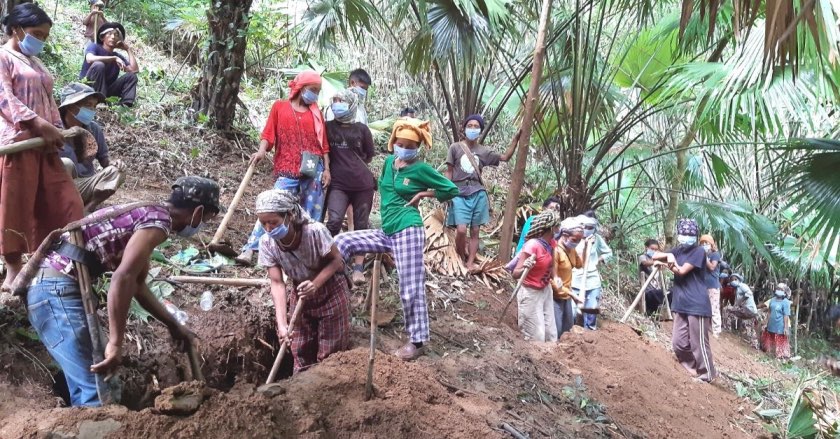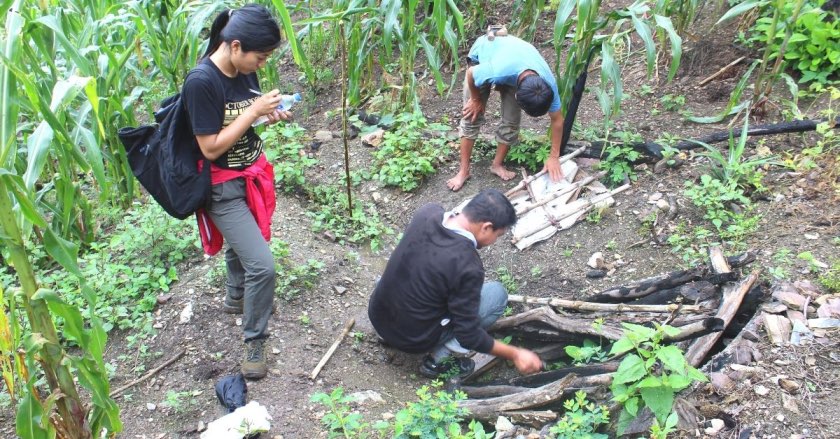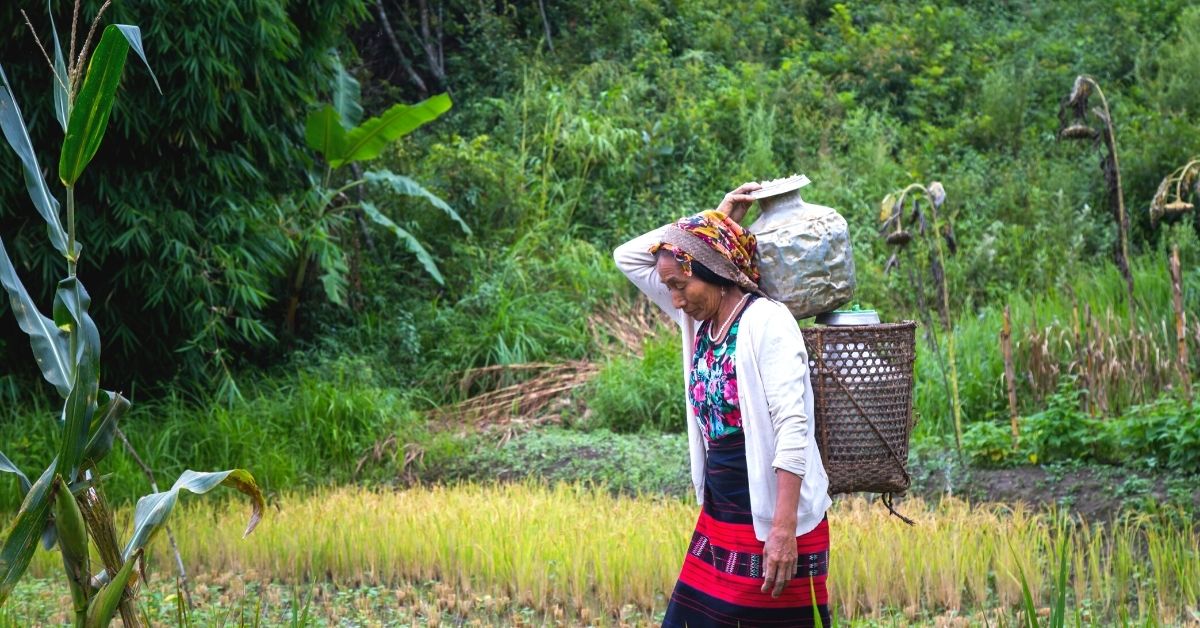Nagaland, a mountainous state in Northeast India, has a peculiar topography that hosts unique and rich varieties of flora and fauna. The state is blessed with an average annual rainfall of 1,800 mm to 2,500 mm.
However, despite falling in a high rainfall region, the villages in the state suffer from acute water scarcity. This is mainly because unlike the mainlands, hilly areas do not allow scope for sustaining substantial natural water bodies such as lakes or ponds. The population living in the far-east side of the country depends primarily on springs and river streams for their survival.
These sources of water have started drying up in recent years. “Construction work, development, and massive deforestation have led to decreased water discharge from spring, and have changed the course of these water bodies,” says Khrolhiweu Tsuhah, project associate at North East Initiative Development Agency (NEIDA).
Khrolhiweu says that having worked closely with communities in the area, she had always heard about water shortage issues in villages across various districts. “The communities could access water during the rain. However, as the monsoon subsided, the water crisis worsened and led to a dependency on water tankers or fetching water from far away springs,” she tells The Better India.
She says this common problem needed urgent attention. “Multiple agencies were working for the cause, and after discussions, everyone came together,” she says. Khrolhiweu is anchoring the multi-stakeholder spring shed management project.
A project led by 300 women and supported by experts and government departments has helped revive 99 springs in 89 villages across 36 districts, benefitting 12,000 households across the state. The move has enabled an increase in the water discharge capacity of the springs and stopped women from having to wander to far off regions in the hope of finding water.
Every spring counts

The project has been underway since 2015, and stakeholders such as NEIDA, People Science Institute (PSI), Land Records Department, Government of Nagaland, Advanced Center for Water Resources Development and Management (ACWADAM) and others have joined hands to rejuvenate the springs.
Imtitula Imchen, a geologist with NEIDA, says that it has been estimated that around 40-45% of the springs have dried, or are on the verge of drying. “The Niti Aayog Report in 2018 identified about 7,500 springs in the state. There may be many more which remain unknown. The anthropogenic activities on the upper sides of the mountains, as well as an increase in settlements have added to the stress on the springs,” she says.
Describing the water dynamics in the region, Imtitula adds that around 30 households depend on one spring. If a spring dries, the population moves to another spring, where a specific population already relies on it. “Thus, it adds to the stress on the freshwater body. Even the water tankers depend on rivers and springs. Overexploitation reaches such an extent during summer months that even the water tankers cannot fulfil the demand immediately and have a waiting period of 2-3 days,” she says.
Hence, to bring a sustainable solution, a pilot project was conducted in 2015 to identify one spring each in 11 villages, and take up the revival work.
Khrolhiweu says the works included spring shed management and geological survey, mapping of the springs with the help of hydro-geological experts, and contour measurement. “Women in the villages received training in terms of capacity building. The community members learned the concept of water conservation and the technicalities involved in watershed management. The women dug trenches, carried plantation work, and demarcated lands to prevent damages to the spring, among other activities, to arrest water,” she adds.
Khrolhiweu says experts further conducted scientific mapping of the area to identify aquifers and recharge them with the water conservation works. The project became a success. All the springs were not only revived, but also and showed continuous improvement.

Kiuyanla, a resident of Mongtsuwong village in Kiphire district, says earlier, she spent most of her day fetching water from far away springs during the summer months. “The time between June to November was good, but as December began, the brunt of water scarcity started becoming evident, as discharge reduced,” she says.
The 39-year-old says that when the experts approached and proposed the water conservation, the village came together. “The responsibility of gathering water for the family lies with the women. Hence, all women willingly joined hands to rejuvenate the springs. Eventually, even the husbands and eligible children worked for the cause,” she recalls.
Kiuyanla adds that the work reached completion in 2019, and immediate results were observed in the next season. “We could get more water from the springs. The work done by a few benefitted the masses. At present, we no longer have to search for water, water as the amount from springs is promising,” she says.
Citing an example, Albert Nguille, an officer at the land records department, says, “In old Jaboka village of Mon district, the discharge of water was registered as 38,880 litres per month recorded in 2017, and jumped to 1,29,600 litres per month in 2019, after the work reached completion.”
Similarly, in Kinunger village of Mokokchung district, the water released from a spring was 3 litres per minute, as recorded in June 2016. “The discharge increased to 14.8 litres per minute in June 2018,” he says, adding that the success was enormous in some areas. “However, not all springs show equal success and differ in each location, depending on various factors including geography, rainfall received, soil composition and other hydro-geological factors,” he says.
Albert says that after the success in 11 villages, the exercise was extended across 36 districts. So far, the work has helped cover an area of 130 hectares.
Challenges continue

Explaining the need for adopting scientific conservation methods, Albert says, “Unlike the Himalayan springs and rivers, Nagaland does not rely on glaciers for the springs to be perennial. Apart from anthropogenic factors, climate change is also altering the behaviour of these water bodies. Hence, such an approach is required for the cause,” he says.
Vargish Bamola, a senior hydro-geologist at People Science Institute (PSI), says, “Besides climate change, the springs also suffer from contamination issues. The rainfall received over the past 100 years has remained the same. However, the rainy days have reduced. It means that hundreds of millimetres of rains may fall in hours resulting in surface run-off and soil erosion,” he explains.
Vargish says that many water sources have been contaminated with bacteria and human waste. “Any construction or building toilets near aquifers or spring sources contaminate them. It is a rising issue. There is a need for a long term policy to protect the springs. At present, the communities are undergoing training to practice social fencing. It involves the villagers mutually resolving and deciding on not constructing toilets near spring origins, or deforesting the area or grazing the animals,” he adds.
The expert says that such practices need to evolve into a policy for implementation across Nagaland.
Imtitula says that gathering data and identifying the precious water sources is of utmost importance. “If we identify the springs and know they are drying, there is hope to revive them. With no data, all the hope diminishes. Having a scientific approach and involving the community is a two-way relationship that would work for helping the springs survive,” she adds.
Edited by Divya Sethu
No comments:
Post a Comment